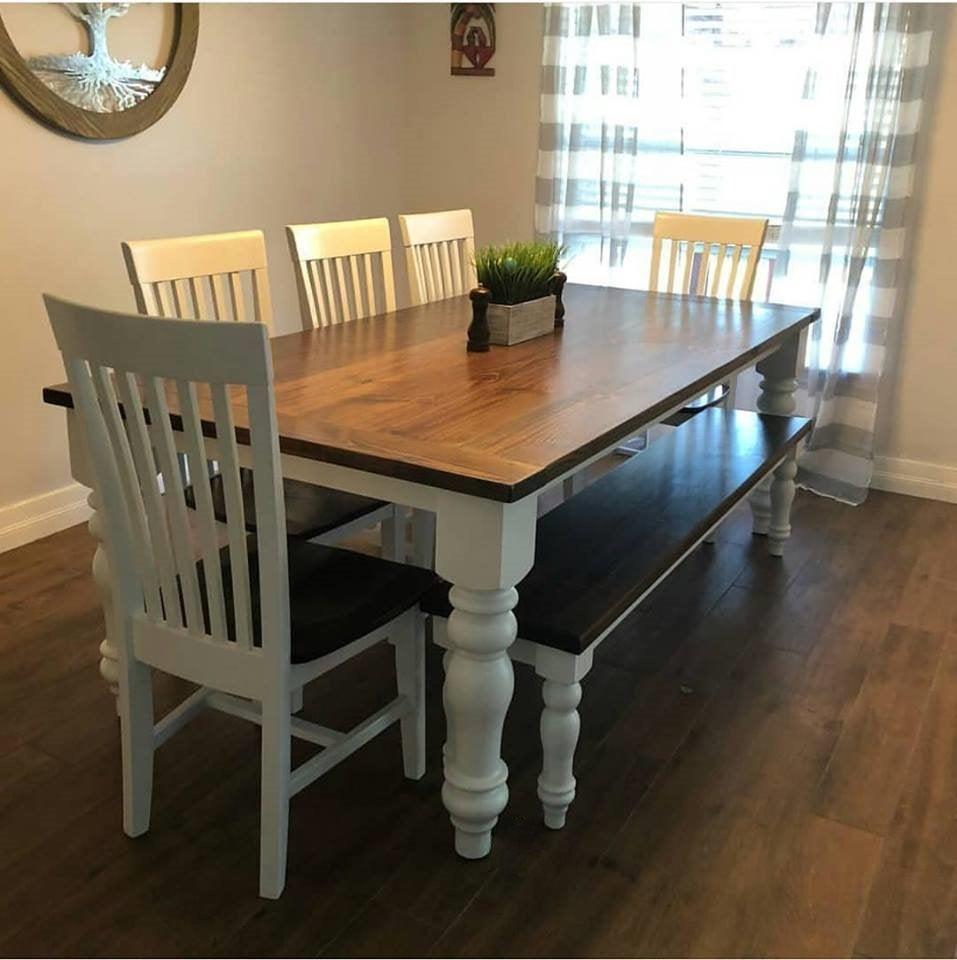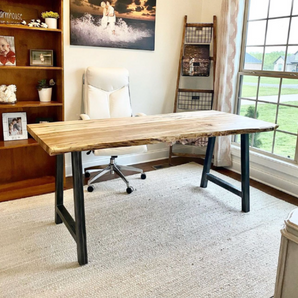Dining Room Table Legs: What to Consider Prior To You Purchase
An In-depth Look at Table Leg Styles: Discovering the Perfect Match
Picking the ideal table leg style is vital for both aesthetic allure and sensible capability. Conventional 4 legs offer timeless sophistication and security, while the pedestal base offers boosted legroom and a modern appearance. For those with larger tables, trestle legs make sure durable assistance, whereas barrette legs introduce a mid-century modern-day ambiance with their minimal design. The x-shaped legs blend modern design with enhanced security. Each of these alternatives brings unique benefits, making the option greater than just a matter of preference. Explore even more to discover which design perfectly enhances your eating space and way of living.
Traditional Four Legs
Amongst the various types of eating table leg styles, the conventional four-leg style remains a timeless choice for many families. Four legs give well balanced support, ensuring the table stays stable and capable of birthing substantial weight (dining room table legs).
From a visual perspective, the standard four-leg style can be easily adapted to different interior styles. Whether crafted from timber, metal, or a mix of materials, these legs can be elaborately carved, streamlined and minimalistic, or anything in between. Their adaptability permits them to enhance both rustic and modern setups flawlessly.
In addition, the simple framework of the four-leg style promotes simplicity of movement and positioning within an area. Unlike more complicated bases, this design decreases blockages, providing sufficient legroom for diners. In recap, the traditional four-leg table leg design weds sustaining elegance with sensible performance, making it an astute option for those looking for both type and feature in their eating furniture.
Stand Base
Typically celebrated for its classy and space-efficient design, the stand base is a distinguished choice to the typical four-leg setup in table leg styles. This unique base generally includes a solitary central column supporting the tabletop, which can vary in type, from ornately carved timber to smooth, modern-day steel. Among the main benefits of the pedestal base is its capacity to take full advantage of legroom and seating versatility. Without edge legs, diners are managed greater flexibility of activity, making it an ideal choice for round and oblong tables that advertise more intimate and comprehensive celebrations.
The central column itself uses a canvas for elaborate layouts and artistic expressions, including an aspect of visual passion below the table. In summary, the pedestal base combines capability with design, making it an improved and sensible alternative for diverse dining environments.
Trestle Legs
Trestle legs offer a robust and timeless structure for dining tables, characterized by their straight cross-bracing and tough support beam of lights. Stemming from medieval times, this style has advanced yet kept its vital framework, making it a perennial fave in both traditional and modern setups. The central trestle beam, frequently sustained by 2 or even more upright blog posts, provides extraordinary stability, permitting for bigger table sizes without the demand for additional legs.
A significant advantage of trestle leg tables is the sufficient legroom they offer. Unlike tables with four corner legs, the absence of obstructions at the table's sides offers unimpeded space for chairs and diners, improving convenience and access. This makes trestle tables suitable for navigate to these guys suiting bigger gatherings, whether in a dining-room or a reception hall.
From rustic farmhouse to streamlined modern designs, trestle legs can be customized to suit private tastes. Their long-lasting appeal and practical benefits make trestle legs an engaging choice for those looking for both design and functionality in their eating table.
Barrette Legs

The allure of barrette legs hinges on their simpleness and versatility - dining room table legs. Readily available in an array of materials, including steel and brass, they can be finished in countless colors to match different interior designs. visit site Whether coupled with a rustic wood table top or a contemporary glass surface, hairpin legs easily mix functionality with a touch of classic charm
Durability is one more notable feature of barrette legs. In spite of their fragile appearance, these legs are engineered to bear significant weight, guaranteeing the dining table continues to be steady and protected. In addition, they are fairly very easy to mount, making them a prominent option for do it yourself lovers and professional furnishings manufacturers alike.
X-Shaped Legs

Built from products such as steel, timber, or a mix of both, X-shaped legs can be customized to match various design choices. Steel legs often provide a streamlined and industrial feel, perfect for loft-style apartment or condos and modern-day eating areas.
Additionally, the design behind X-shaped legs makes certain also weight distribution, lessening the risk of tottering and improving resilience. This makes them especially fit for bigger eating tables that require added assistance. Fundamentally, X-shaped legs blend practical engineering with contemporary aesthetics, making them a timeless option for diverse eating settings.
Conclusion
A thorough understanding of eating table leg designs reveals the unique features and benefits of each layout. Standard four legs supply stability and classic appeal, while pedestal bases provide legroom and a structured appearance. Trestle legs ensure durable assistance for bigger tables, and hairpin legs present a mid-century contemporary visual. X-shaped legs integrate modern layout with boosted security. Selecting the appropriate leg style makes sure both useful and aesthetic complete satisfaction in any eating room.